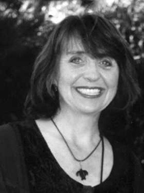The Ferries In Our Future: Clean and Green or More Dirty Diesel?

By Teri Shore Bluewater Network
Published: September, 2001
Will the ferries in our future be powered by fuel cells? Sun and wind power? Electric drives? Or tried and true, but dirtier, diesel? That’s what regional ferry planners are trying to determine. Top marine engineers hired by the Water Transit Authority (WTA) are now studying the many fuels and technologies available for powering a fleet of clean, fast ferries on San Francisco Bay. The WTA is facing a December 2002 deadline to develop a draft ferry expansion plan.
To its credit, the WTA has commissioned in-depth studies on a wide range of alternative fuels and technologies such as biodiesel, natural gas, gas turbines, methanol, ethanol, fuel cells, solar, wind power and many others. Petroleum diesel with exhaust and fuel treatments that reduce air emissions are also being analyzed as part of the alternative fuels and technologies review.
The goal of these studies is to determine the optimal fuel sources and technologies that could be utilized to run a ferry fleet while minimizing air and water pollution and other potential environmental harm. The WTA is mandated by state legislation to conduct "a feasibility analysis and proposal for the use of new technologies and alternative fuels in marine engines and ground transportation intermodal services, to the extent feasible, to minimize air emission and water pollution impacts from the system operations."
Although the studies are just beginning, the environmental community is concerned that ferry planners may not be giving equal weight to alternative fuels and technologies compared to conventional petroleum diesel favored by the marine industry.
For instance, the fact that the WTA added diesel fuel options to its alternative fuels studies indicates a possible bias toward the status quo. In comparison, alternative fuels are defined as "substantially non-diesel" in the federal Energy Policy Act. Since the description applies to alternative fuels for federal vehicle fleets, not ferries, the WTA is not bound to follow this directive. But the WTA is bucking fuel industry convention by considering petroleum diesel as an alternative fuel choice.
Diesel is the dirtiest fuel source available. Its exhaust causes cancer, smog, and global warming. Reducing emissions from uncontrolled marine diesel engines on existing ferries is important. But use of cleaner diesel should not be given priority over alternative fuels and technologies in the study of a new fleet of ferries, particularly when newer options will be cleaner and probably more cost effective (environmentally and economically) in the long run.
One example of advanced new technology is Solar Sailor, possibly the world’s cleanest ferry. The solar-and-wind-powered vessel has been operating on Sydney Harbor in Australia for more than a year. It releases zero emissions when run on sun and wind power. A modified Solar Sailor is now being built for commute service in Hong Kong.
By capturing San Francisco Bay’s steady winds and utilizing a back-up generator to power the electric drive, the Solar Sailor could possibly achieve speeds of 20 to 25 knots and carry 200 to 300 passengers or more. The vessel could be appropriate for several commute and recreational routes on San Francisco Bay, including Treasure Island, Alameda, Alcatraz and Sausalito. Only a comprehensive study and, ultimately, the testing of a demonstration vessel will determine its potential use on San Francisco Bay.
However, the WTA has been slow to embrace this technology, saying the vessel is too slow and experimental, and that detailed studies are not needed in at this stage. After some prodding from the environmental community, the WTA is now taking a closer look, even traveling to Sydney, Australia to inspect the vessel. Bluewater hopes that this is not just a timely public relations move, but shows a true commitment to exploring this exciting, high-tech marine technology.
In contrast, at a recent WTA meeting held at City Hall in San Francisco, WTA’s chief marine engineer demonstrated a strong interest in alternative fuels when she explained the benefits of fuel cells for use on ferries in the future. While fuel cells present a potentially terrific clean power source that Bluewater wholeheartedly supports, the technology will not be available for marine applications for a decade or more.
Until fuel cells are available, more can and should be done to discover and utilize other alternative power sources that go beyond the use of diesel with emissions reduction technology.
Bluewater is convinced that in order for the WTA to meet its legislative mandate, the Solar Sailor and other advanced technologies must be aggressively pursued by the WTA. The WTA and its engineers should leave no stone unturned in finding the cleanest possible alternative fuels and technologies. Doing so will position the WTA to offer a clean ferry plan to the legislature next year and gain the support of the environmental community.
To urge the Water Transit Authority to give a higher priority to environmental issues, a new coalition of environmental groups has developed the Clean Ferry Coalition, currently consisting of key environmental groups: Bluewater Network, CALPIRG, Golden Gate Audubon Society, San Francisco BayKeeper, National Audubon, Save The Bay, and Treasure Island Wetlands Project.
These groups and the public will be invited to voice concerns about how new ferries might affect our Bay during environmental hearings to be held in all nine Bay Area counties in the next two months of September and October. (To check the dates, call the WTA at 415-291-3377 or check www.watertransit.org.)

